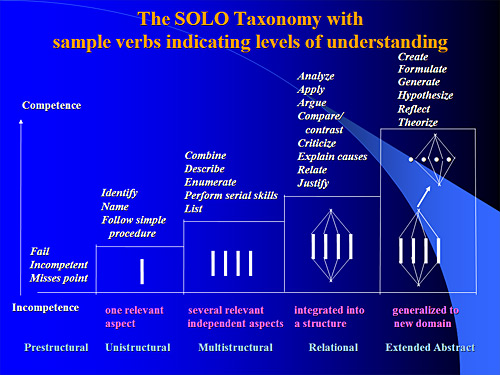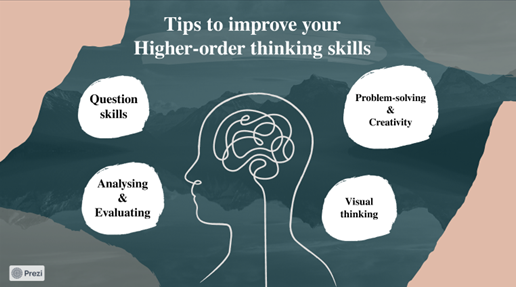Chapter 5: Learn for Deep Understanding
Our brains are extremely powerful—if you know how to use them. This chapter is about unleashing your cognitive potential, i.e. your brainpower for learning.
Making good use of your powerful brain
What is learning? Your answer to this question shapes how you learn. Those who think of learning as acquiring information will naturally rely on rote learning, i.e. memorising facts and reciting them in examinations. Those who think of learning as understanding, on the other hand, will probably try to see how things relate to each other, investigate how things work, and explore how an idea can be applied in different situations. And how you learn (your ‘approach to learning’) in turn shapes what you will be able to understand and do with your knowledge. Good learners cannot rely on rote learning alone. How can you take learning to the next level?
Taking understanding to the next level with higher-order thinking
Educational psychologists create ‘taxonomies’ to describe and classify different levels of understanding or learning outcomes. One example is the SOLO taxonomy by John Biggs (another popular one is the Bloom’s taxonomy), which categorises understanding into 5 levels: Pre-structural, Uni-structural, Multi-structural, Relational and Extended Abstract. Look at the diagram below.

SOLO Taxonomy by John Biggs & Kevin Collis (1982)
source: https://www.johnbiggs.com.au/academic/solo-taxonomy/
Which level best describes how you learn? Are you ready to move onto a higher level? Go to the prezi presentation by clicking on the image below to discover how.
Higher-order thinking and university study
University study requires a lot higher-order thinking skills, e.g. analyse, compare and contrast, justify, hypothesise, evaluate and create, etc. Class activities and assignments provide you with opportunities to develop and apply your higher-order thinking skills to help you understand the subject and demonstrate your understanding of the subject. Outside the class, you can also develop a habit of applying higher-order thinking skills in attempting daily problems and investigating the topics that interest you. The more you apply these skills, the more you will understand. Also, if you understand what learning is about, you will learn better and more effectively.
Why is it good to understand learning?
When you understand how learning happens, you will find what can help you learn and train yourself to learn better. For example, when you find yourself struggling with procrastination, you look up information for causes of procrastination and methods to train yourself to stop this bad habit. When you find it difficult to understand the relationship between complex concepts, you look up information for methods supported by theories and used by other people to help you analyse the information and draw relationships. Do not feel panic when you encounter difficulties in learning. There are plenty of materials available in our library and on the internet that you can find to help you cope with these difficulties, understand about learning, improve your learning ability, and develop yourself into a better and effective learner.
References
- Biggs, J., & Collis, K. (1982). Evaluating the Quality of Learning: The SOLO Taxonomy. NY: Academic Press.








